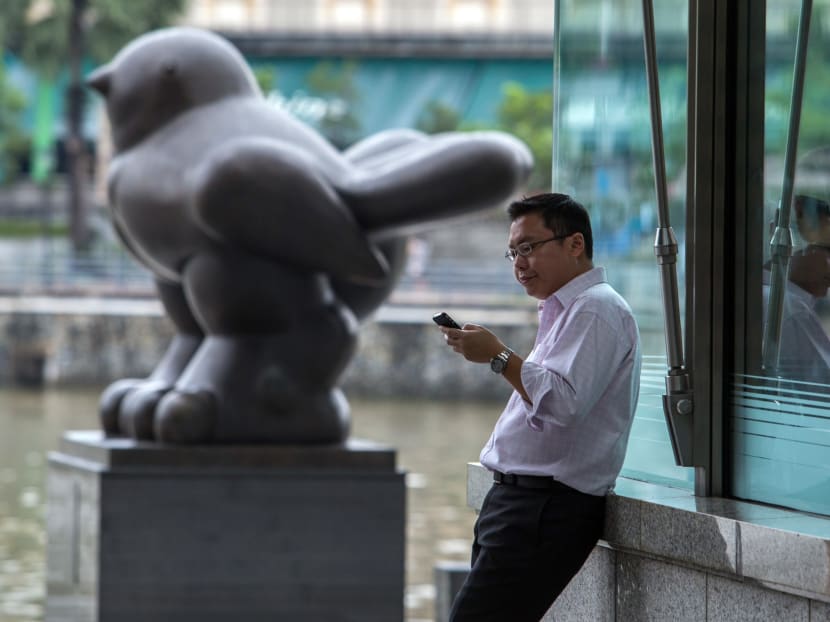4G networks to cover more than 95% of outdoor areas by July
SINGAPORE — With more mobile users turning to 4G as their main go-to network for faster connectivity, local telcos will have to meet new benchmarks set by the authorities for their 4G coverage, said the Infocomm Development Authority (IDA) on Wednesday (June 1).
SINGAPORE — With more mobile users turning to 4G as their main go-to network for faster connectivity, local telcos will have to meet new benchmarks set by the authorities for their 4G coverage, said the Infocomm Development Authority (IDA) on Wednesday (June 1).
From July, telcos’ 4G networks are required to cover more than 95 per cent of all outdoor areas, with the requirement raised to more than 99 per cent by July 2017.
In the next phase, telcos must extend their tunnel coverage by more than 99 per cent from July 2018. And by January 2019, they must also cover more than 85 per cent of all floors, including basement one in buildings.
The 4G Quality of Service (QoS) standards relate to the “pervasiveness of mobile coverage in Singapore, which includes outdoor areas, tunnels and within building premises”, said the IDA.
These standards, which take reference from the 3G QoS standards which were enhanced in 2012, will be imposed concurrently with the 3G ones.
An IDA study on 4G networks, conducted in the first quarter of this year, found that telcos have already hit the target for nationwide outdoor coverage, with Singtel leading at 99.89 per cent, followed by StarHub at 99.43, and M1 at 99.36.
Singapore’s potential fourth telco will also have to meet these new standards by October 2018. Those who fail to meet them may be fined up to S$50,000 per month for each breach.
Announcing the new 4G service standards at the opening of CommunicAsia 2016, Mr Gabriel Lim, chief executive-designate of Infocomm Media Development Authority (IMDA), said: “Connectivity isn’t just an economic enabler, but something that people have come to expect as a basic right … It can also help the industry innovate and create more services that could be delivered, either over cellular networks or wirelessly.”
As of February, 4.2 million mobile users have subscribed to 4G services.
In response to media queries on what telcos were doing to raise their service coverage in areas, such as underground and road tunnels — previously deemed as areas which needed improvement — StarHub chief technology officer Mock Pak Lum said in a statement: “We are reviewing the new 4G QoS standards. Offering our customers quality connectivity is our priority, and we will continue to upgrade our network to ensure we provide excellent mobile coverage and service for our customers.”
Singtel CEO of Consumer Singapore, Mr Yuen Kuan Moon, said: “We will continue to deploy innovative enhancements across both radio technology and network levels to ensure our customers keep enjoying Singapore’s best 4G mobile experience.”
He added that its network was “designed to meet IDA’s stringent criteria”.
Saying that Singtel had “outperformed” the IDA’s 4G coverage standards for six quarters in a row, Mr Yuen said its 4G services were also complemented by its roll-out of the LTE 900 and tri-band connectivity, which aids in “in-building coverage and ability to provide more consistent and faster mobile speeds”.
M1’s director of corporate communications, Mr Ivan Lim, said: “Today, we have more than 99 per cent 4G coverage for outdoor areas and will continue to invest to meet the other requirements in the new standards.”







